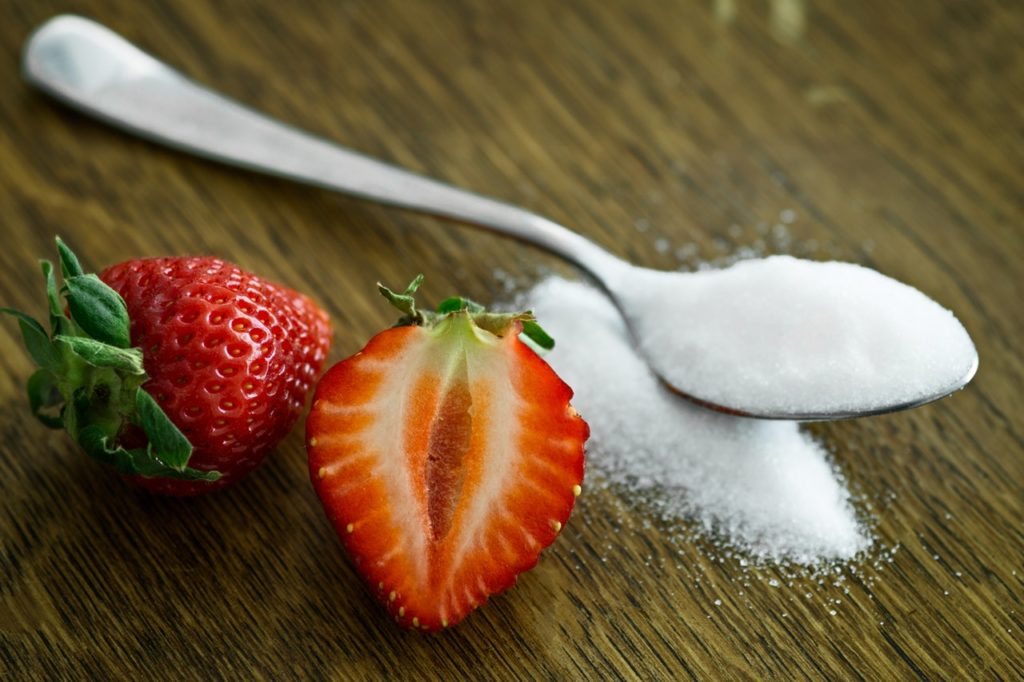Sugar makes you old!

Wow! you look amazing vs Are you ok? You look tired?
Which would you prefer? Daft question I guess – nobody wants to look old before their time, in fact we’d probably all prefer the “Wow, you don’t look old enough to…” type of comments.
Most of us know the usual suspects in the ageing game include:
· stress
· smoking
· alcohol
· sun
· lack of sleep
· lack of exercise
· lack of water
· fat free diet (more on this later)
But, did you know that SUGAR is also aging you?
Not only does this “food” add empty calories to our daily consumption, piling on the kilos, it has been found to have a devastating effect on our skin’s elasticity.
The thing is, sugar likes protein. During digestion, sugar molecules attack protein in a process called glycation. It coats the protein creating “Advanced Glycation End Products” , or AGE – a rather appropriate acronym! The more sugar you eat the more AGE you produce and the older you will look!
Why, because we have two key proteins in our skin – collagen and elastin. These give our skin tone, elasticity and firmness. Along comes sugar, attaches to collagen and elastin, thereby damaging them and leaving our skin saggy and wrinkled.
Now if that doesn’t make you give up the demon sugar, I don’t know what will!
But, not all is lost! We can start to reverse these effects immediately and fairly easily.
1 the most obvious start is to cut back on refined sugar
Sugar should make up no more than 10% of your calorie intake. For a 40 year old woman of average height, that’s 160 calories (10 tsps). Before you think that’s a lot, consider that one can of Coke contains 10 teaspoons of sugar! And steer clear of fruit juices – they sound healthy but pack almost as much sugar.
Rather, increase your fruit consumption (2-3 pieces a day) for naturally occurring sweetness. Your body will also thank you for the added nutrients, vitamins and fibre. Don’t forget the natural sugars in vegetables such as sweet corn.
Not only will your skin thank you, but you might just lose weight and reduce your risk of diabetes too.
2 Learn to read labels
Did you know that all of these are sugars: barley malt, corn syrup, dextrose, fructose, fruit juice concentrate, maltose, maple syrup, molasses, and turbinado?
You need to calculate how many teaspoons are in each serve. To do this, check the label for sugars (listed in grams under carbohydrates) and divide by 4 (1 teaspoon sugar = 4 g). eg, if sugars are listed as 16g per 100, you are getting 4 teaspoons of sugar per serve.
Best of all, eat fresh not processed!
3 Boost your skin’s health with vitamins B, C and E
– check with your health practitioner on the ideal supplement dosage for you.
Go nuts! a handful of unsalted nuts provide healthy fats, are filling and tasty as well.
Another great dietary antioxidant is omega 3 fatty acids. These are typically found in cold water fish such as salmon and sardines.
So, back to the “fat free is ageing you” topic:
We all need good fats such as those mentioned above in fish and nuts as well as seeds, avocado and extra virgin olive oil. These omega 3 fatty acids and monounsaturated fats have powerful anti-inflammatory effects which improve your skin’s texture and suppleness.
Good fats also help us absorb nutrients from other foods, keep cells supple and our brains sharp.
So, my challenge to you is to spend a week writing down what you eat (be honest!) and then start gradually removing the processed sugars from your diet. It might take a little while to get used to it, but I promise that your body and skin will thank you!
You don’t have to go it alone – email me: anja@goforfit.com.au and come and join us for fun, supportive, energising outdoor group exercise
